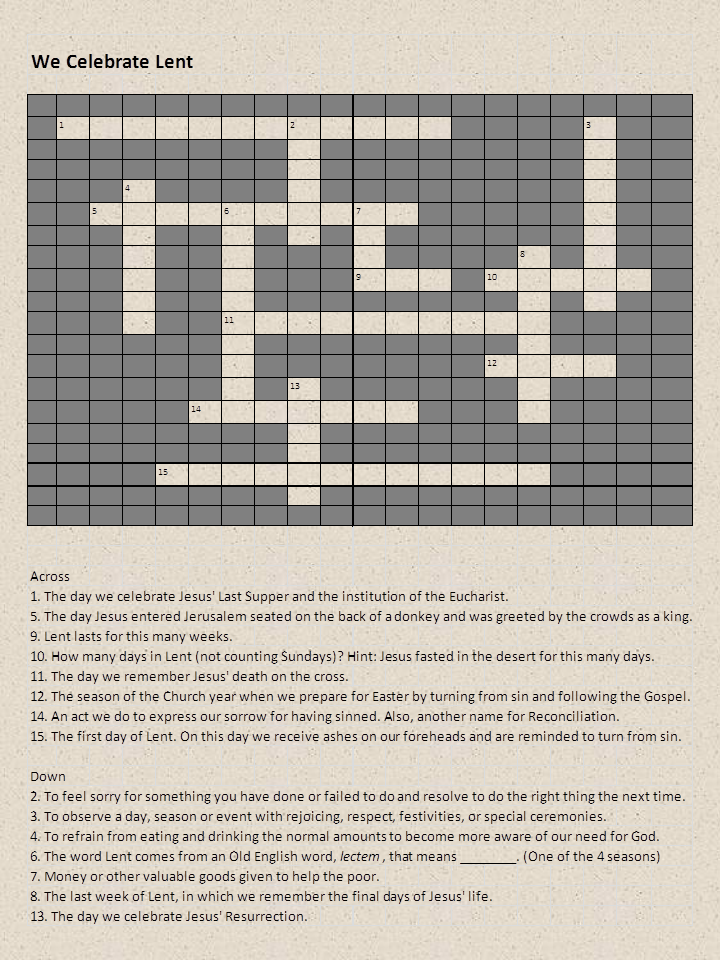Growing: From the Celebration of Light at Candlemas into Lent
 The arrival of Lent always seems too fast. Christmas season is so short yet so intense following the four weeks of Advent. We get a brief few weeks of Ordinary Time to ponder the baptismal experience of Jesus and his response, and then, BOOM, here we are in Lent again! It sometimes feels like maybe we should just postpone it for a few more weeks. Maybe Easter wouldn’t really have to be the first Sunday after the first full moon of spring. Would that be such a big deal? But then I think a bit further and decide that maybe 2000 years of tradition have something to tell me/us today as well.
The arrival of Lent always seems too fast. Christmas season is so short yet so intense following the four weeks of Advent. We get a brief few weeks of Ordinary Time to ponder the baptismal experience of Jesus and his response, and then, BOOM, here we are in Lent again! It sometimes feels like maybe we should just postpone it for a few more weeks. Maybe Easter wouldn’t really have to be the first Sunday after the first full moon of spring. Would that be such a big deal? But then I think a bit further and decide that maybe 2000 years of tradition have something to tell me/us today as well.
February begins with the celebration of Candlemas on February 2. This day recognizes events in the life of Jesus and his parents when they visited the temple both for the ritual purification of Mary 40 days after childbirth and the presentation of Jesus, as her firstborn son, to God. It is also known as Candlemas because the prophet Simeon recognized Jesus as the Promised One and foretold that he would be a light to all the nations. Candles have been the primary source of light for most of the history of Christianity, so they became associated with these feasts.
As we listen to the Gospel accounts of the ministry of Jesus, we see him discovering the special relationship he has with God as Father and the mission for which he has been sent. He accepts that mission, to gather the people of Israel and bring them back with him to the Father, beginning with the poor and marginalized of his land. It’s not without reason that he calls fishermen and tax collectors to be his special friends or that he uses images of farming, tending flocks, baking bread, keeping house, and fishing to explain God’s love for the people. These are realities deeply understood by his audience.
Jesus had three years in which to grow into the man who would stand before the religious and political leaders of his country and testify to the truth of who he was/is. During that time he preached and healed many of those who were brought to him. He also retreated regularly into the hills or off onto the Sea of Galilee to pray. We are told more than once that he slipped away to pray early in the morning and his disciples had to go looking for him. To their insistent reminders that people were waiting for him, Jesus responded that time to be with his Father was even more important. That time away with his Father was what made it possible for him ultimately to face and accept his death and the apparent failure of his mission.
We are called to live in the light of the Resurrection, but we are also called to live as Jesus did. That means we must deal with many of the same realities faced by the people of his time. Poverty, injustice, hardship, the unfairness of life — these things are not unique to the ancient world nor to our world. It is through prayer, fasting, and other activities of Lent that we grow in strength to follow the Lord. When Easter arrives, we rejoice with the newly baptized as we once again rise with the Lord in our daily lives. All is renewed and hope springs forth eternally. From the Light come into the world, through the time of deepening prayer and growth in faith, to the joy of the Resurrection.
It’s time to celebrate Lent!
Read More



















